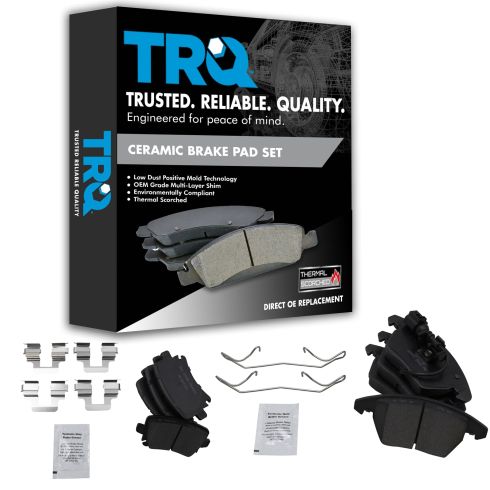1ABFS02322-VW Audi Front & Rear Ceramic Brake Pads TRQ BFA13011

Replaces
2015 Audi TT Quattro Front & Rear Ceramic Brake Pads TRQ BFA13011

Product Reviews
Loading reviews
5.00/ 5.0
7
7 reviews
Very good parts, excellent price and delivery.
July 10, 2017
1aauto was the best source for a very high quality spares. It took less than the original time to deliver and the demonstration videos were a great help to do the job properly.
Great brake pads set
September 14, 2017
They where a perfect fit and the price was great, easy to install and save a lot of money.
Cost/shipping
October 25, 2017
Prices are very good shipping is incredibly fast.
I ordered brake pads for my GTI and they arrived 2 days later .Parts typically arrive within a couple days. The install video's can be quite helpful.
Good price for good quality brakes
November 24, 2019
Great price for ceramic brake pads- So far they seem to be wearing and working great
TRQ BRAKE PADS
February 23, 2022
Just replaced my front brake pads with the TRQ brake pads.
Bought them ecause they were a complete kit, had all new clips and springs.
Old Audi brakes squeeked everywher, the TRQ pads are quite, feels better, stops better.
March 1, 2022
Works great!
May 5, 2022
Superb product. No noise, when car is breaking.
Ernst S.
Customer Q&A
Will these fit my 06 Jetta 2.5L? My roter size front 288mm and 260mm rear. And does the front left brake pad come with the sensor on it?
February 7, 2022
10
Yes, this part will fit your vehicle.
February 8, 2022
T I
10
They did not have a sensor on them
March 1, 2022
Bruin B
Will this fit my vw Jetta 2.5 l5? Rotor size front 288mm rear 260mm.
February 8, 2022
10
We would be happy to check. What is the year and sub model of your VW Jetta?
February 8, 2022
Andra M
Audi is a registered trademark of Audi AG. 1A Auto is not affiliated with or sponsored by Audi or Audi AG.
See all trademarks.









